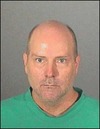In the July 13th Los Angeles Times, “A Complex Portrait of Rampart’s Redemption,” reporter Jill Leovy got it absolutely correct in writing that many factors contributed to the remarkable turnaround in Rampart area, and more specifically in MacArthur Park.
In 1991, Rampart was the most violent piece of real estate in Los Angeles; fifteen years later its crime rate lies below the city average. While credit for the success must be shared, it’s important to recognize that the Los Angeles Police Department under Chief William Bratton deserves recognition as the primary change agent.
Ms. Leovy’s article focused on homicide rates as the sole measure of crime reduction. While homicide is an important indicator of a community’s health, it’s an imprecise indicator for Rampart since two-thirds of the area’s murders are gang related. So the precipitous drop in murders is more a measure of reducing gang influence than crime in general.
To understand the full measure of Rampart’s redemption, one must look at the totality of major crime as well as the pattern of arrests.
At the point Chief Bratton took office in October 2002, Rampart’s crime decline had been on a two-year spike upward. Who knows how long the up trend would have continued?
The impetus for change in Rampart came through leadership, dedication, and focus within the police department. It was a concerted effort over two years in which all areas of crime dropped, and murders reached their lowest levels ever, 28 for the year 2004.
While Rampart got its redemption, MacArthur Park saw its renaissance. In those two years, this Los Angeles landmark went from being a magnet for crime to an inviting oasis in an urban center.
The renaissance is best illustrated through the arrest profile around MacArthur Park. What the article missed was how monthly triple-digit arrests in the 1990s have dropped to a mere trickle in last two years, with crimes rates remaining low.
As the captain in Rampart during that renaissance, I want to share the credit and the success with the community, businesses, schools, and all levels of governmental partners. It was a true partnership. But make no mistake, the real credit goes to the men and women of LAPD who worked Rampart during that period. They met many challenges: scandals, the lack of public trust, and critics who said it could not be done. But they persevered through it all in large part thanks to Chief Bratton’s faith in them and his ability to trust in their professionalism and dedication.
The police can be a catalyst for change in society, but society must be willing to jump in and work with the police. And when the renaissance occurs, society must be willing to sustain the effort.
CHARLIE BECK, Commander
Los Angeles Police Department
 On July 11, 2006, Thanh Chi Phung, 45, pled guilty to the murder with
an added weapons charge enhancement, of Rosemary Hom. Phung was
sentenced to 16 years to life.
On July 11, 2006, Thanh Chi Phung, 45, pled guilty to the murder with
an added weapons charge enhancement, of Rosemary Hom. Phung was
sentenced to 16 years to life.  from the crime scene. Interviews of family members and witnesses led
detectives to focus on Phung, whose DNA had recently been placed in
CODIS because of a prior crime conviction. Phung's DNA matched that
from the crime scene, and he was located and arrested in La Puente.
from the crime scene. Interviews of family members and witnesses led
detectives to focus on Phung, whose DNA had recently been placed in
CODIS because of a prior crime conviction. Phung's DNA matched that
from the crime scene, and he was located and arrested in La Puente. 
Recent Comments